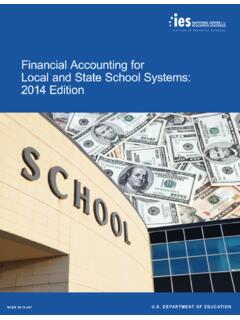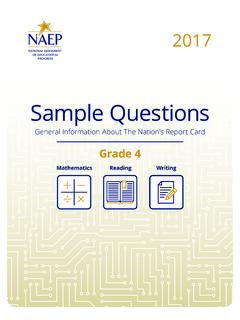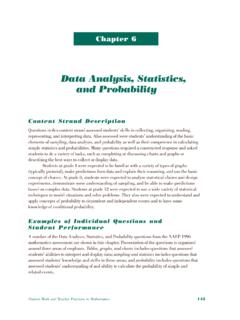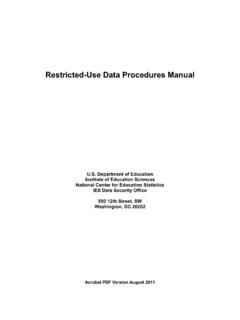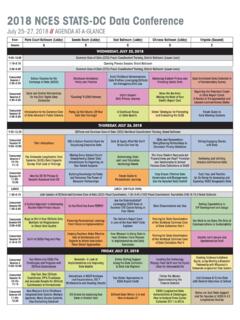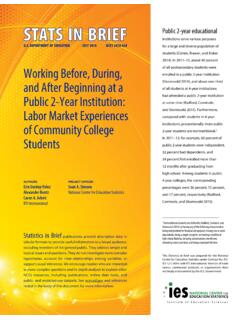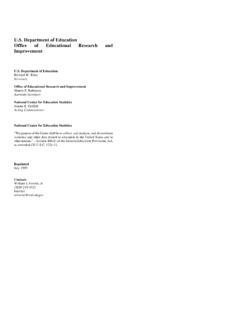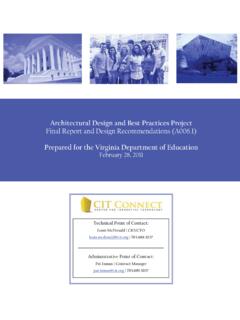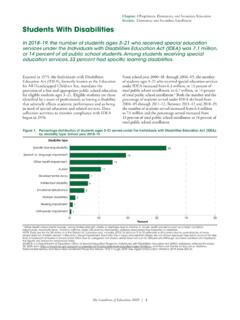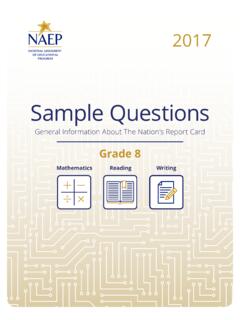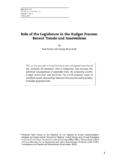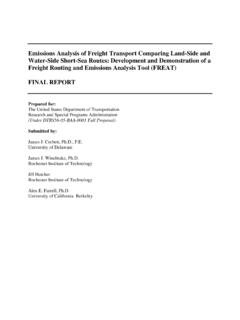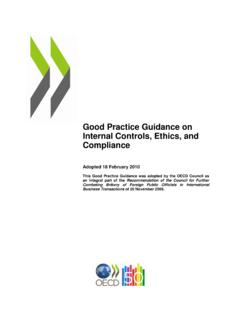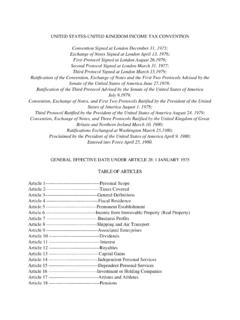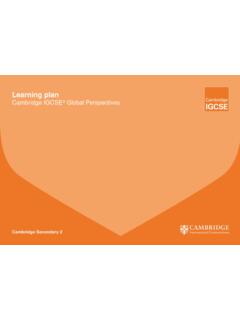Transcription of PISA Mathematics Literacy Items and Scoring Guides
1 Mathematics Literacy PISA Mathematics Literacy Items and Scoring Guides The Mathematics Literacy Items and Scoring Guides document contains 27. Mathematics assessment units and 43 Items associated with these units. These released Items from the PISA 2000 and PISA 2003 assessments are distinct from the secure Items , which are kept confidential so that they may be used in subsequent cycles to monitor trends. 1. Mathematics Literacy TABLE OF CONTENTS. UNIT NAME PAGE. APPLES 3. CONTINENT AREA 7. SPEED OF RACING CAR 10. TRIANGLES 15. FARMS 16. CUBES 19. GROWING UP 21. WALKING 25. ROBBERIES 29. CARPENTER 31. INTERNET RELAY CHAT 33. EXCHANGE RATE 36. EXPORTS 39. COLORED CANDIES 42. SCIENCE TESTS 43. BOOKSHELVES 44. LITTER 45. EARTHQUAKE 47. CHOICES 48.
2 TEST SCORES 49. SKATEBOARD 51. STAIRCASE 55. NUMBER CUBES 56. SUPPORT FOR THE PRESIDENT 58. THE BEST CAR 59. STEP PATTERN 62. FORECAST OF RAINFALL 63. 2. Mathematics Literacy APPLES. A farmer plants apple trees in a square pattern. In order to protect the trees against the wind he plants conifers all around the orchard. Here you see a diagram of this situation where you can see the pattern of apple trees and conifers for any number (n) of rows of apple trees: 3. Mathematics Literacy Question 1: APPLES M136Q01- 01 02 11 12 21 99. Question intent: Change and relationships Complete the table: n Number of apple trees Number of conifers 1 1 8. 2 4. 3. 4. 5. Scoring : Correct Answers which show all 7 entries correct. Correct entries shown in italics.
3 N Number of apple trees Number of conifers 1 1 8. 2 4 16. 3 9 24. 4 16 32. 5 25 40. Incorrect Two or more errors. Other responses. Percentage of students answering correctly in PISA 2000: OECD average: 50%. : 53%. 4. Mathematics Literacy Question 2: APPLES M136Q02- 00 11 12 13 14 15 99. Question intent: Change and relationships There are two formulas you can use to calculate the number of apple trees and the number of conifers for the pattern described above: 2. Number of apple trees = n Number of conifers = 8n where n is the number of rows of apple trees. There is a value of n for which the number of apple trees equals the number of conifers. Find the value of n and show your method of calculating this.. Scoring : Correct Responses with the correct answer, n=8.
4 Responses including both the answers n=8 AND n=0. Incorrect Other responses, including just the response n=0. Percentage of students answering correctly in PISA 2000: OECD average: 25%. : 24%. 5. Mathematics Literacy Question 3: APPLES M136Q03-01 02 11 12 21 99. Question intent: Change and relationships Suppose the farmer wants to make a much larger orchard with many rows of trees. As the farmer makes the orchard bigger, which will increase more quickly: the number of apple trees or the number of conifers? Explain how you found your answer.. Scoring : Fully Correct Answers which are correct (apple trees) AND which give some algebraic explanations based on the formulas n2 and 8n. Partially Correct Answers which are correct (apple trees) AND are based on specific examples or on extending the table.
5 Answers which are correct (apple trees) and show SOME evidence that the relationship between n2 and 8n is understood, but not so clearly expressed as in Full Credit. Incorrect Answers which are correct (apple trees) but give an insufficient or wrong explanation, or no explanation. Other responses. Percentage of students answering correctly in PISA 2000: OECD average: 13%. : 15%. 6. Mathematics Literacy CONTINENT AREA. Below is a map of Antarctica. ANTARCTICA. South Pole Mt Menzies Kilometers 0 200 400 600 800 1000. 7. Mathematics Literacy Question 1: CONTINENT AREA M148Q02. Content: Space and shape Estimate the area of Antarctica using the map scale. Show your work and explain how you made your estimate. (You can draw over the map if it helps you with your estimation).
6 Scoring : Fully Correct These scores are for answers that use the correct method AND give the correct result. The digit indicates the different approaches. Answers which are estimated by drawing a square or rectangle- between 12,000,000 sq kms and 18,000,000 sq kms (units not required). Answers which are estimated by drawing a circle- between 12,000,000 sq kms and 18,000,000 sq kms. Answers which are estimated by adding areas of several geometric figures- between 12,000,000 sq kms and 18,000,000 sq kms. Answers which are estimated by other correct methods- between 12,000,000 sq kms and 18,000,000 sq kms. Answers which are correct (between 12,000,000 sq kms and 18,000,000 sq kms) but no working out is shown. 8. Mathematics Literacy Partially Correct These scores are for answers that use the correct method BUT give an incorrect or incomplete result.
7 The digit indicates the different approaches, matching the digit of the Fully Correct scores. Answers which are estimated by drawing a square or rectangle- correct method but incorrect or incomplete answer. Answers which are estimated by drawing a circle- correct method but incorrect or incomplete answer. Answers which are estimated by adding areas of several regular geometric figures- correct method but incorrect or incomplete answer. Answers which are estimated by other correct methods- correct method but incorrect or incomplete answer. Incorrect Answers which calculate the perimeter instead of area. Other responses. Percentage of students answering correctly in PISA 2000: OECD average: 20%. : 21%. 9. Mathematics Literacy SPEED OF RACING CAR.
8 This graph shows how the speed of a racing car varies along a flat 3 kilometer track during its second lap. Speed Speed of a racing car along a 3 km track (km/h) (second lap). 180. 160. 140. 120. 100. 80. 60. 40. 20 0. 0 Starting line Distance along the track (km). Source: In memory of Claude Janvier, who died in June 1998. modified task after these ideas in Janvier, C. (1978): The interpretation of complex graphs studies and teaching experiments. Accompanying brochure to the Dissertation. University of Nottingham, Shell Centre for Mathematical Education, Item C-2. The pictures of the tracks are taken from Fischer, R & Malle, G. (1985): Mensch und Mathematik. Bibliographisches Institut: Mannheim-Wien-Zurich, 234-238. 10. Mathematics Literacy Question 1: SPEED OF RACING CAR M159Q01.
9 Question intent: Change and relationships What is the approximate distance from the starting line to the beginning of the longest straight section of the track? A km B km C km D km Scoring : Correct Answer B. km Incorrect Other responses. Percentage of students answering correctly in PISA 2000: OECD average: 67%. : 62%. 11. Mathematics Literacy Question 2: SPEED OF RACING CAR M159Q02. Question intent: Change and relationships Where was the lowest speed recorded during the second lap? A At the starting line. B At about km. C At about km. D Halfway around the track. Scoring : Correct Answer C. At about km. Incorrect Other responses. Percentage of students answering correctly in PISA 2000: OECD average: 83%. : 83%. 12. Mathematics Literacy Question 3: SPEED OF RACING CAR M159Q03.
10 Question intent: Change and relationships What can you say about the speed of the car between the km and km marks? A The speed of the car remains constant. B The speed of the car is increasing. C The speed of the car is decreasing. D The speed of the car cannot be determined from the graph. Scoring : Correct Answer B. The speed of the car is increasing. Incorrect Other responses. Percentage of students answering correctly in PISA 2000: OECD average: 83%. : 82%. 13. Mathematics Literacy Question 4: SPEED OF RACING CAR M159Q05. Question intent: Change and relationships Here are pictures of five tracks: Along which one of these tracks was the car driven to produce the speed graph shown earlier? S B. S. A. S C. S. D. S. E. S: Starting point Scoring : Correct B.
